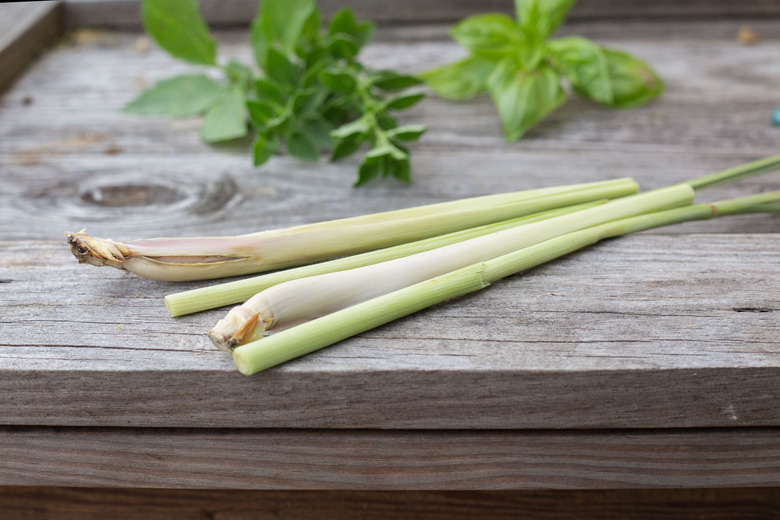How To Grow Lemon Grasses
Lush, aromatic lemon grass (Cymbopogon citratus) can fit into any flower or vegetable garden, even if only grown for one season. Lemon grass, an Asian herb with thick stalks that impart a lemony flavor when cooked, is an evergreen perennial in U.S. Department of Agriculture plant hardiness zones 8 through 11, but it can be grown to harvestable size as an annual in any zone. Set out small lemon grass plants at any time where it's evergreen and after all danger of frost has passed elsewhere.
Things Needed
-
Compost
-
Mulch
-
Water-soluble fertilizer
-
Watering can
-
Pot (optional)
How to Grow Lemon Grass
1. Add Compost to Soil
Spread a 2- to 4-inch-thick layer of compost over an area of garden soil that drains well and receives at least eight hours of sun per day. Allow enough room for at least 3 feet between lemon grass plants or between the lemon grass plant and other plants. Dig the compost into the soil with a garden shovel to a depth of 4 to 6 inches.
2. Plant the Lemon Grass
Dig a hole that's roughly the size of the container that your lemon grass plant is in. Set the plant into the prepared soil at the depth it was in the nursery pot. Backfill the hole and water in well.
3. Water Deeply and Regularly
Water lemon grass plants deeply and regularly, never letting the soil dry out, when rain doesn't provide the necessary moisture. The plants need lots of moisture, and the roots will dry out quickly and kill the plant if you don't keep up with the watering. Lemon grass commonly grows slowly at first and puts on height quickly during the hottest part of the summer. The plant responds well to humid weather, though frequent misting can improve its performance.
4. Mulch Around the Plants
Apply a 2- to 4-inch layer of mulch around lemon grass plants to help the soil retain moisture.
5. Fertilize Monthly in Summer
Fertilize lemon grass with a high-nitrogen, water-soluble fertilizer that's suitable for vegetables once a month throughout the summer months, mixed at half the recommended label rate.
6. Check for Problems
Check lemon grass for the white and yellow specks left by tiny spider mites or the small red spots of leaf blight. The plant is generally resistant to pests and diseases if grown in the recommended conditions, but some issues can arise. Spray infested plants with strong blasts of water from a garden hose to dislodge mites, repeating as you notice insect damage. Hand pick and discard any leaves that show signs of blight.
7. Over-Winter Lemon Grass
Dig up a clump of the lemon grass plant from around the edge of the plant, or the whole plant if it's not too big. Place it in a pot with potting soil before the first frost if you want to overwinter your lemon grass outside its hardiness range. Put the pot in the coolest spot in your home or garage that stays above freezing; reduce the water to a light watering once a month to let the plant go dormant. Resume watering in early spring, and plant the lemon grass out again after the last frost. Make sure to use a container that drains well.
